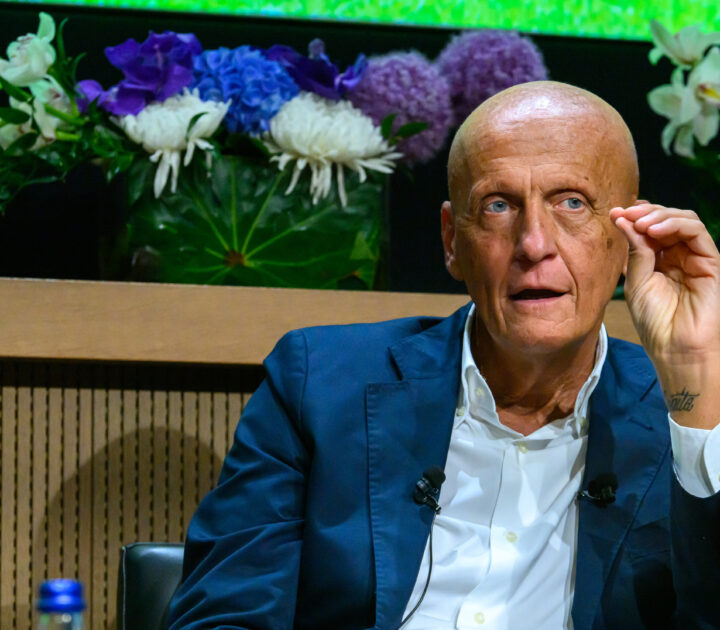
How to prepare leaders for a VUCA world
Suppose a multinational company needs an executive to lead its entry into a country that could experience spectacularly strong economic growth, but could also falter. The market has rough-and-tumble social, economic, political, and business environments, and a glacially slow judicial process in which national laws are deemed by the powerful and the connected as the starting points for negotiations.
The two equally competent candidates lined up for the opportunity are of the same gender and age, and have comparable experience and ethical standards. They differ in only one way. Executive A comes from the multinational’s home base, a largely mono-ethnic country where one religion dominates. Key national laws are benchmarks for other countries. People follow clear-cut political rules and civic values, ruefully accepting the inevitable fine that follows driving 6 kmph above the posted limit. At work, behavioral rules are unambiguous, as are business processes. Executive A has also successfully managed in countries that aspire to, but fall short of, such orderliness. Executive B comes from a country where multiple ethnic, linguistic, and religious traditions co-exist, sometimes uneasily. Red traffic lights merely suggest stopping. The judiciary usually, but not always, administers laws in accordance with accepted norms; the laws themselves are a mix of internationally accepted and outdated. At work, behavioral rules are ambiguous, though are getting better, and business processes range from world class to non-existent. Executive B has also successfully managed in countries with greater orderliness, albeit not like Executive A’s homeland.
Who should be selected for the job? The target market could be described as a volatile, uncertain, complex, and ambiguous environment. We know that such “VUCA” conditions trip up executives accustomed to more sedate settings. Who, then, has dealt more with VUCA conditions – the one who knows that a 6 kmph speeding violation will elicit a fine, or the one who accepts that a driver may not stop for a red light? Whose environment has trained her/him since childhood not to expect a rational and predictable world? An objective selector would arguably pick Executive B.
Who is likely to get picked? The global business community is neither as cosmopolitan nor as much a meritocracy as the image it projects. Research suggests that likeability and similarity to interviewers influence hiring decisions more than suitability for (current or future) work. Research also shows that despite globalization, firms typically hire home country nationals as CEOs. Emerging research in Asia shows Western multinationals consider Western executives better prepared for promotions than comparable Asian executives, while anecdotes suggest the reverse may also be true. So, it is highly likely that the multinational in this thought experiment would pick Executive A.
Executives are rarely as evenly matched professionally as they are in this scenario. Nor is one’s social background so suited for an assignment, while the other’s isn’t. In any case, democracies try to keep people’s social backgrounds from overly determining or constraining their futures. Moreover, VUCA environments are rapidly enveloping even stable nations because of sharp and rapid (“disruptive”) technological changes, people’s unease with social changes, major political disagreements within and between countries, terrorism and war in a highly interconnected world, the pressure on natural resources and from global warming, etc.
Many – dare I say most? – companies aren’t prepared for the VUCA world. Their executives allude to VUCA in strategy presentations, but rarely work at realigning their internal reality – structure, processes, information flows, culture, and talent – to the demands of their VUCA environment. Their words are eloquent, but they experience no cognitive disconnect when they use planning systems that demand single point (“Q1: $10 million”) revenue or profit or growth goals to confront those challenges. They acknowledge the importance of “outside in” viewpoints, without recognizing how internal sense-making capabilities constrain their absorption. These gaps will adversely affect, even destroy, some companies.
Even in companies that recognize the stakes, making these changes will take time. Where should they start? Which early changes will have (1) widespread impact (2) in a relatively short time (3) while laying the foundation for long term? They should focus on their Talent Management System (TMS).
Largely developed in the 20th century, many TMS are well past their prime. They are poor – as research and practice have shown – at creating diverse workforces, even at executive levels. My focus here is on a less appreciated problem: TMS elicit praises of managers who plan well and the virtual worshipping of managers who execute plans brilliantly. If someone excels in both – subject to likeability and similarity considerations – they facilitate promotions that provide the accoutrements of power. And these individuals, in turn, favor those who are also proponents of strong planning and flawless execution. In other words, traditional TMS are superb for finding “Executive A” types who were perfect for the 20th century.
In a VUCA world, however, carefully laid plans often don’t survive contact with hard reality. Planning and execution don’t become irrelevant, but do become baseline requirements. Three other capabilities are key: the ability to sense, on the fly, the reality of a situation; the ability to respond effectively to the sensed reality, even without resources to assess major implications carefully; and the ability to learn rapidly from experience and incorporate the lessons into future plans, execution, and most importantly, the building of sense and respond capabilities. Executive B probably had to master these capabilities for day-to-day living: how to go with the flow, gauge the environment, and make snap decisions using available (and presumably flawed) information.
Though these increasingly essential capabilities are observable, traditional TMS don’t ascribe them value. To appreciate the veracity of this assertion, consider the TMS’ most visible tool: the quarterly or annual performance review. Reflecting its decades old origin, it evaluates execution based on specific plans (tied to a goal or KPI) set at the beginning of the evaluation period. So, it simply cannot readily capture a person’s ability to sense and respond to emerging realities, or to learn from these. Good bosses compensate by supplanting the original plans/goals/KPI with new ones after new business realities emerge. This ad hoc approach, though necessary, can be unfair – what if your boss isn’t “good?” Indeed, several (mostly high tech) companies have begun drastically reshaping or abandoning traditional performance evaluations for closely related reasons.
A mostly ignored demographic change is compounding this key weakness. The average age of top executives, including CEOs, has dropped sharply since 1980. The average CEO tenure has dropped over 50% during the same time. The average tenures of non-CEO executives have probably dropped too: Women – who weren’t on executive teams prior to 1980 – are rising to power more quickly and spend less time at each level. Data collected informally from executive education participants around the world suggests that since 2005, the average tenure for mid-to-senior executives has between 2 and 3 years, well below the average in earlier years. So, companies have limited opportunity to formally observe, record, and nurture/correct any capability that traditional performance evaluation doesn’t capture routinely.
Companies should start making changes from the top. Their Board and CEO can reasonably select top leaders based on their ability to sense, respond and learn well before these become a part of their formal leadership standards. One key appointment would be that of the top HR executive, who must lead the changing the TMS. Such top down change will facilitate the further transformation necessary for a VUCA world: Executives who have experiential understanding of what it takes to sense, respond and learn will be responsible for carrying out the transformation, not those who are only comfortable in the world of plan and execute.
Amit S. Mukherjee is Professor of Leadership and Strategy at IMD business school in Singapore.
Research Information & Knowledge Hub for additional information on IMD publications
Many executives say they don’t have time for mindfulness practices, such as daily meditation. An alternative is micro-presence: weaving moments of ...
The most successful executive teams can achieve outsized outcomes, but they can also be challenging to manage and be a part of. The author, a psych...
Technological innovation, advances in remote work, and reshaped post-pandemic priorities have led to companies hiring fractional leaders, or part-t...
The payment processing industry in Europe had operated in largely the same way for decades. A standard system of financial processing and clearing ...
In recent years, sustainable leadership has emerged as a powerful force reshaping corporate strategies worldwide. At its core, sustainable leadersh...
Research Information & Knowledge Hub for additional information on IMD publications
Research Information & Knowledge Hub for additional information on IMD publications
Research Information & Knowledge Hub for additional information on IMD publications
in I by IMD 5 July 2024
Research Information & Knowledge Hub for additional information on IMD publications
in HBR.org 2 July 2024
Research Information & Knowledge Hub for additional information on IMD publications
in I by IMD 28 June 2024
Research Information & Knowledge Hub for additional information on IMD publications
Research Information & Knowledge Hub for additional information on IMD publications
Research Information & Knowledge Hub for additional information on IMD publications
Research Information & Knowledge Hub for additional information on IMD publications
Research Information & Knowledge Hub for additional information on IMD publications





